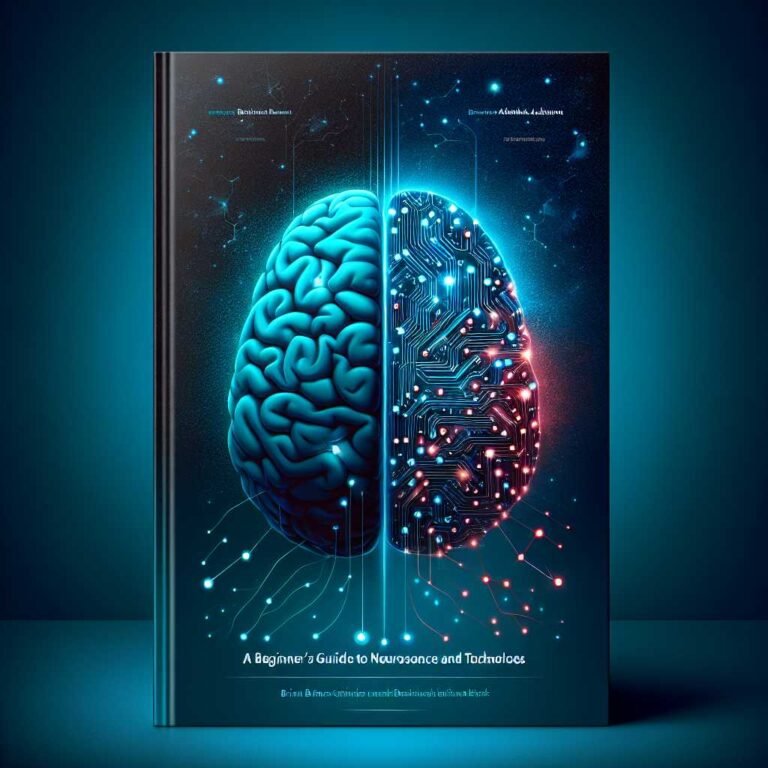Exploring the Legal Boundaries of Brain Computer Interfaces: Understanding the Complexities of Regulation
Brain Computer Interfaces (BCIs) have emerged as a groundbreaking technology that allows direct communication between the human brain and external devices. This technology holds immense potential for improving the lives of people with disabilities, enhancing cognitive abilities, and even revolutionizing the way we interact with technology.
However, as with any disruptive technology, there are legal and ethical considerations that need to be addressed. The regulation of BCIs is a complex and evolving field, as it involves various aspects such as privacy, informed consent, intellectual property, and potential risks.
- Privacy Concerns
- Informed Consent
- Intellectual Property
- Potential Risks
- The Way Forward
- Bard's point of view on legal boundries of Brain Computer Interfaces
- Demystifying the Legal Frameworks Surrounding Brain Computer Interfaces: Navigating the Path to Innovation
Privacy Concerns
One of the primary concerns surrounding BCIs is the privacy of the user’s thoughts and brain activity. BCIs have the potential to read and interpret a person’s thoughts, emotions, and intentions, which raises questions about the protection of this highly personal information. It is crucial to establish clear guidelines and regulations to ensure that the data collected by BCIs is used ethically and with the user’s consent.
Informed Consent
BCIs involve the collection and processing of highly sensitive data, which makes informed consent a critical issue. Users must be fully aware of the potential risks and benefits associated with using BCIs and provide their informed consent before participating in any experiments or using these devices. Ensuring that users have a clear understanding of the technology and its implications is essential for protecting their rights and autonomy.
Intellectual Property
BCIs raise complex intellectual property issues. The technology itself, as well as the data generated by BCIs, can have significant commercial value. Questions arise regarding who owns the intellectual property rights to the technology and the data collected. Clear regulations need to be established to protect the rights of inventors, researchers, and users, while also fostering innovation and collaboration in the field.
Potential Risks
Like any technology, BCIs come with potential risks. These risks include the possibility of unauthorized access to a user’s thoughts and emotions, the potential for manipulation or coercion, and the risk of addiction or dependency on BCIs. Regulating BCIs involves assessing and mitigating these risks to ensure the safety and well-being of users.
The complexities of regulating BCIs require a multidisciplinary approach involving legal experts, neuroscientists, ethicists, and policymakers. Collaboration between these different fields is essential to address the legal and ethical challenges posed by BCIs effectively.
The Way Forward
As BCIs continue to advance and become more accessible, it is crucial to establish clear and comprehensive regulations to protect the rights and privacy of users, while also fostering innovation and the development of this transformative technology. This requires ongoing dialogue, research, and collaboration among stakeholders to ensure that the legal boundaries of BCIs are defined in a way that promotes responsible use and maximizes the benefits for individuals and society as a whole.
Bard’s point of view on legal boundries of Brain Computer Interfaces
Response was provided by a simple prompt to BARD
The legal frameworks surrounding BCIs are still evolving, but there are a number of important legal issues that need to be considered. These issues include:
- Consent: It is important to obtain informed consent from users before using BCIs. This means ensuring that users understand the risks and benefits of BCI use and that they are making a voluntary decision to use the technology.
- Privacy: BCIs can collect a lot of data about users’ brain activity. It is important to protect this data from unauthorized access and use.
- Safety: BCIs are a new technology and there are some potential risks associated with their use. It is important to ensure that BCIs are safe and effective before they are widely used.
Some specific legal issues that have been raised in relation to BCIs include:
- Criminal liability: If someone commits a crime using a BCI, who is criminally liable? The user? The manufacturer of the BCI?
- Employment law: Can employers require their employees to use BCIs? Can employers use BCI data to monitor employee performance?
- Intellectual property law: Who owns the intellectual property rights to BCI technology? Who owns the data that is collected by BCIs?
These are just a few of the legal issues that need to be considered as BCI technology develops and becomes more widely used. It is important to develop legal frameworks that protect the rights of users and that promote the responsible development and use of BCI technology.
Here are some examples of legal frameworks that are being developed or implemented around the world:
- In the United States, the FDA has issued draft guidance on the regulation of BCIs. This guidance provides recommendations on how to design and conduct clinical trials for BCIs and on how to submit BCI products for FDA approval.
- The European Union has adopted the General Data Protection Regulation (GDPR), which provides strong protections for personal data. The GDPR may apply to BCI data, depending on how the data is collected and used.
- Australia has developed a National Framework for Brain-Computer Interfaces. This framework provides guidance on the ethical, legal, and social implications of BCIs.
These are just a few examples, and the legal frameworks surrounding BCIs are still evolving. It is important to stay informed about the latest developments in this area to ensure that you are using BCI technology in a responsible and legal way.
Demystifying the Legal Frameworks Surrounding Brain Computer Interfaces: Navigating the Path to Innovation
Exploring the Legal Boundaries of Brain Computer Interfaces: Understanding the Complexities of Regulation
Introduction to Brain Computer Interfaces (BCIs)
Brain Computer Interfaces (BCIs) have emerged as a groundbreaking technology that allows direct communication between the human brain and external devices. This innovative field has tremendous potential to revolutionize various aspects of our lives, including healthcare, communication, and entertainment. However, such transformative advancements also bring along complex legal implications. In this article, we will delve into the legal boundaries of BCIs, exploring the need for legal frameworks, current regulations, challenges in regulation, ethical considerations, international approaches, key stakeholders, and the future prospects for BCI regulation.
Understanding the Potential of BCIs
BCIs hold the promise of restoring lost functionalities to individuals with disabilities, enabling them to regain control over their lives. For instance, paralyzed patients can use BCIs to control robotic limbs, allowing them to perform essential tasks independently. Furthermore, BCIs offer the potential for enhancing cognitive abilities, such as memory and attention, which can have far-reaching implications for education and professional development.
With the rapid advancement of BCIs, it is crucial to establish legal frameworks that ensure the responsible development, deployment, and use of this technology. Such frameworks will not only protect the rights and safety of individuals but also facilitate innovation and foster public trust in BCIs.
The Need for Legal Frameworks in BCI Development
As BCIs continue to evolve, it becomes imperative to address the legal challenges associated with their development and use. Legal frameworks provide the necessary guidelines and boundaries to ensure that BCIs are developed and utilized ethically and responsibly. These frameworks need to encompass various aspects, including data privacy, informed consent, liability, intellectual property rights, and potential risks associated with the use of BCIs.
By establishing legal frameworks, governments can proactively address potential issues and risks while fostering an environment that encourages innovation in BCI technology. Moreover, these frameworks can help build public confidence by assuring individuals that their rights and safety are protected.
Current Legal Regulations for BCIs
Currently, the legal landscape for BCIs is still in its infancy, with limited specific regulations in place. Most existing regulations surrounding BCIs are derived from broader legal frameworks, such as those governing medical devices and data privacy. However, as BCIs become more prevalent and their applications expand, there is a growing need for dedicated regulations that address the unique challenges posed by this technology.
For instance, medical device regulations may cover certain aspects of BCIs, such as safety and efficacy. However, they may not adequately address issues related to data privacy and security, which are critical in the context of BCIs. Therefore, it is essential to develop comprehensive and specialized regulations specifically tailored to BCIs to ensure their safe and ethical use.
Challenges in Regulating BCIs
Regulating BCIs poses several challenges due to the complex nature of this technology. BCIs involve the collection and processing of highly personal and sensitive data, raising concerns about privacy and security. Additionally, the potential risks associated with BCIs, such as hacking or misuse of brain data, require careful consideration and regulation.
Another challenge lies in balancing the need for regulation with the promotion of innovation. Overly stringent regulations may stifle the development of BCIs, hindering their potential benefits. Striking the right balance between regulation and innovation is crucial to ensure the responsible advancement of BCIs while harnessing their transformative potential.
Ethical Considerations in BCI Regulation
Ethical considerations play a fundamental role in the regulation of BCIs. As BCIs involve direct access to the human brain, issues like informed consent, autonomy, and the potential for coercion need to be carefully addressed. Ensuring that individuals have control over their brain data and the ability to make informed decisions regarding its use is paramount.
Moreover, ethical guidelines should also consider the equitable distribution of BCIs, avoiding potential disparities in access and benefits. It is crucial to ensure that BCIs are developed and regulated in a manner that promotes inclusivity and does not exacerbate existing social inequalities.
International Approaches to BCI Regulation
Different countries and regions have adopted varying approaches to regulate BCIs. Some jurisdictions have incorporated BCIs into existing legal frameworks, such as medical device regulations, while others have introduced specialized regulations. For example, the European Union has recently proposed a regulatory framework for AI systems, including BCIs, to ensure their safety and ethical use.
International collaboration and harmonization of regulations are essential to address the global nature of BCI development and deployment. Sharing best practices, exchanging knowledge, and establishing common standards can facilitate responsible innovation and ensure a consistent level of protection for individuals using BCIs.
Key Stakeholders in BCI Regulation
Regulating BCIs involves the collaboration of various stakeholders, including governments, regulatory bodies, healthcare professionals, researchers, industry players, and user communities. Each stakeholder brings unique perspectives and expertise to the table, contributing to the development of comprehensive and effective regulatory frameworks.
Furthermore, engaging with individuals who will directly benefit from BCIs, such as patients with disabilities, is crucial. Their insights and experiences can provide valuable input in shaping regulations that meet the needs and expectations of the end-users.
Future Prospects for BCI Regulation
The future of BCI regulation holds both challenges and opportunities. As BCIs continue to advance, novel legal and ethical issues will emerge, requiring ongoing adaptation of regulatory frameworks. Governments and regulatory bodies need to remain proactive and agile in addressing these emerging challenges while fostering an environment that encourages innovation and responsible development of BCIs.
Moreover, continuous collaboration between all stakeholders is crucial to ensure that regulations keep pace with technological advancements and evolving societal needs. By collectively addressing the legal boundaries of BCIs, we can unlock their full potential and pave the way for a future where BCIs improve the quality of life for individuals around the world.
Conclusion: Striking a Balance Between Innovation and Regulation in BCI Development
In conclusion, the legal boundaries of Brain Computer Interfaces are complex and multifaceted. While BCIs offer tremendous potential for improving lives, they also raise significant legal and ethical considerations. Developing comprehensive legal frameworks that address the unique challenges of BCIs is essential to ensure their safe and responsible development, deployment, and use.
Balancing innovation and regulation is key to harnessing the transformative potential of BCIs while safeguarding individual rights and societal well-being. Collaboration among governments, regulatory bodies, industry players, and user communities is crucial in shaping effective and ethical regulations. By navigating the legal boundaries of BCIs, we can unlock their full potential and pave the way for a future where this technology benefits humanity at large.
🧠✨ Discover the Future of Mind-Computer Interaction! ✨🧠
Dive deep into the extraordinary world of Brain-Computer Interfaces (BCIs) and unravel the ethical complexities, groundbreaking innovations, and transformative potential of this cutting-edge technology! 🚀
🌟 Why You Should Explore Our Blog:
In-Depth Insights: Gain profound insights into the latest advancements in BCIs, from mind-controlled prosthetics to mind-boggling neurotechnologies!
Ethical Explorations: Delve into the ethical considerations shaping the future of BCIs, including privacy, consent, and societal impact. Engage in thought-provoking discussions about the intersection of technology and humanity.
Inspiring Stories: Discover real-life stories of individuals whose lives have been transformed by BCIs. Explore how this technology is making a difference in healthcare, accessibility, and beyond.
Expert Perspectives: Benefit from expert perspectives, interviews, and case studies from leading researchers, developers, and ethical thinkers in the field of BCIs.
Interactive Engagement: Engage in interactive discussions, leave your comments, and be part of a vibrant community passionate about the future of mind-computer interaction.Ready to embark on a journey into the future of human potential? Click InnoVirtuoso – Brain Computer Interface Topics now to start exploring! Don’t miss out on the chance to expand your horizons, challenge your perspectives, and stay informed about the incredible world of Brain-Computer Interfaces.
Join us in shaping a future where the power of the mind knows no bounds! 🌌🧠 Let’s explore the endless possibilities together! 🚀🔍







